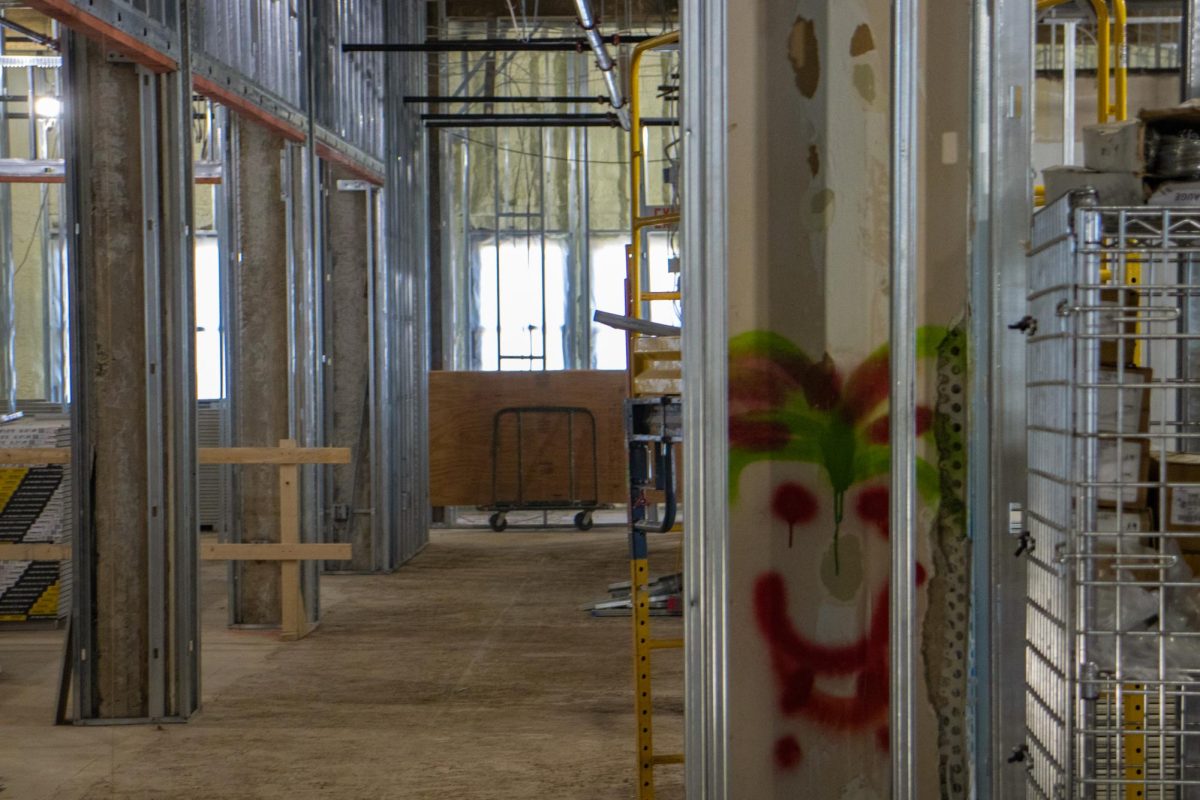Smoke in Your Eyes: The Hazy Debate Over Lighting Up on Campus

March 11, 2012
The thorny issue of students smoking on campus is not unfamiliar territory for the administration. The school banned lighting up in the Tavern way back in 1998 (wait, you mean people used to smoke inside?) and stomped out smoking in and around residence halls back in 2003. The prospect of a campus sans cigarettes has faded in and out of debate since 2007.
AU came close to a smoking ban in 2008, when a bill to enact new guidelines on limiting smoking on campus made its way before Student Government; the bill passed the senate despite a veto from SG President Joe Vidulich. At the same time as the kerfuffle over smoking shuffled through SG, the University President’s council began investigating the feasibility of a campus smoking ban. When confronted with the issue in 2008, University President Neil Kerwin expressed cautious disagreement with both the limits of the bill and the prospect of a ban, instead opting to begin a more passive courtesy campaign and implementing smoking cessation programs.
SOC Professor W. Joseph Campbell, PhD, served on the President’s Council when they considered the possibility of the ban four years ago, and said he was disappointed when the effort did not result in a smoke-free campus policy.
“It’s clear that it would take a concerted effort to get it done,” Professor Campbell said of the current effort to ban smoking on campus. As a self-described “reformed smoker” who gave up the habit several years ago, Professor Campbell cited the health issues, financial expenses and the unsightly nature of smoking as the main reasons for his support of a campus-wide ban. Campbell indicated that phasing the regulation in over the course of a few years might make a ban easier to swallow, and said he hopes the University decides to take a firmer stance on the issue as the debate picks back up again.
Dr. Gary Weaver, a professor in SIS, takes a different stance on the prospect of a smoking ban. Although Weaver kicked the habit 20 years ago and is not a fan of smoking, he does not think an all-out ban is the best idea
“When I was a smoker, I always resented the self-righteous fanatics who believed it was their personal responsibility to stop me from smoking,” Weaver wrote when contacted, underscoring the main source of tension in the debate.
He also pointed out that AU attracts a number of individuals— including faculty, staff and students— from cultures where smoking is common, and questioned if the University should necessarily require them to “give it up” upon arrival.
Just to clarify: I don’t smoke, and don’t plan on picking up the habit any time soon. I oppose smoking for health, environmental and animal rights reasons (cigarettes are still tested on animals, after all). I become annoyed when I walk out of a building and into a cloud of smoke and disheartened by all the cigarette butts littering the sidewalks and garden areas around campus. These irksome experiences, though, largely result from the irresponsibility of individual smokers—and warrant more of an emphasis on the personal responsibilities and courtesies associated with electing to smoke.
To be fair, making AU smoke-free does seem to mesh with campus sustainability and health goals, and banning smoking would certainly prevent piles of cigarettes from littering the quad—an especially offensive reality, considering the role the campus plays as an arboretum. But a number of more realistic avenues for limiting the harmful impact of smoking and encouraging personal responsibility already exist and could easily be enforced.
Taking more of a middle road in promoting environmental stewardship and personal health —including stricter enforcement of existing smoking policies or relegating smoking to only select areas of the campus— could help alleviate the constant haze of secondhand smoke surrounding campus buildings and lessen the number of smoldering cigarettes on walkways without infringing on the choice to smoke. Greater promotion of smoking cessation programs or provision of discounted nicotine patches, gum or other over-the-counter treatment to any student who voluntarily commits to a smoking cessation program could provide encouragement for students to quit smoking, and an education campaign on the health effects of smoking and of secondhand smoke could heighten awareness of the issue as well.
Of course, a middle-of-the-road approach is precisely what President Kerwin favored during the last round of smoking ban debates in order to limit the effects of smoking on campus—and neither the cigarette litter nor the disregard of smoke-free zones provide evidence that the current policy works.
Before lighting a blaze of controversy by hastily enacting a blanket ban, let’s hope a more serious discussion between smokers and nonsmokers about rights and responsibilities takes place and a reasonable solution emerges before the issue is left to smolder and fade in an unresolved haze.
Photo by Latente via Flickr.


